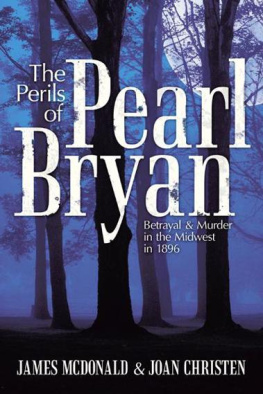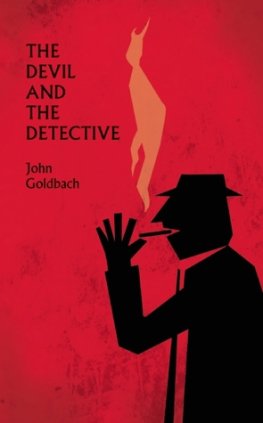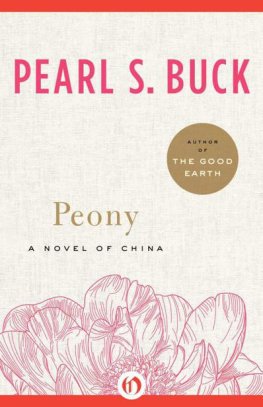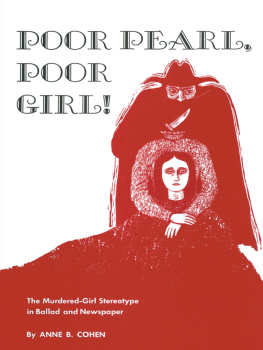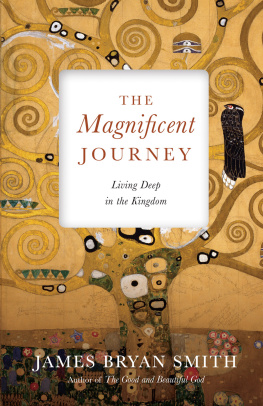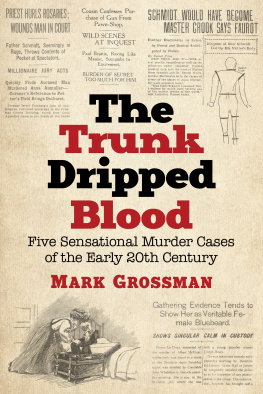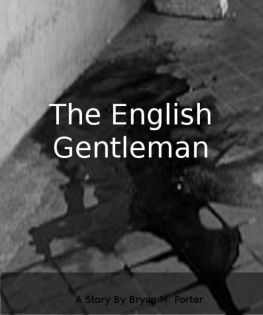THE PERILS OF
PEARL BRYAN
Betrayal and Murder in the Midwest in 1896
Cast not your pearls before swine,
for they will trample them underfoot.
Matthew 7:6
James McDonald and Joan Christen

AuthorHouse
1663 Liberty Drive
Bloomington, IN 47403
www.authorhouse.com
Phone: 1-800-839-8640
2012 James McDonald and Joan Christen. All rights reserved.
No part of this book may be reproduced, stored in a retrieval system, or transmitted by any means without the written permission of the author.
Published by AuthorHouse 7/5/2012
ISBN: 978-1-4634-4443-3 (sc)
ISBN: 978-1-4634-4444-0 (hc)
ISBN: 978-1-4634-4442-6 (e)
Library of Congress Control Number: 2011914163
Any people depicted in stock imagery provided by Thinkstock are models,
and such images are being used for illustrative purposes only.
Certain stock imagery Thinkstock.
Because of the dynamic nature of the Internet, any web addresses or links contained in this book may have changed since publication and may no longer be valid. The views expressed in this work are solely those of the author and do not necessarily reflect the views of the publisher, and the publisher hereby disclaims any responsibility for them.
Contents
When Lovely Woman Stoops to Folly
When lovely woman stoops to folly,
And finds too late that men betray.
What charm can soothe her melancholy?
What art can wash her guilt away?
The only art her guilt to cover,
To hide her shame from every eye,
To give repentance to her lover,
And wring his bosom, is to die.
Oliver Goldsmith (1730-1774)
I retired as Professor and Dean of Education at the Indiana University School of Dentistry in 2004. Shortly after my retirement, I was browsing through a 14-page life journal that my grandfather had written shortly before his death in 1968. As I focused carefully on the words he had laboriously typed with arthritic fingers at the age of 85, I was struck by his following description:
During 1895-1897, I sold The Kentucky Post in South Carrollton, Kentucky. My sales boomed during the time of the Pearl Bryan murder case, and the subsequent trials of the two accused dental students. After the guilty verdicts were reached and the executions completed, my newspaper sales declined considerably.
As I read this brief account, my mind was quickly deluged with questions: Who was Pearl Bryan? How had she been murdered? Who were the two indicted dental students and where had they attended school? Had they actually confessed to the crime? Why had my grandfathers newspaper sales grown so much during this event?
I immediately conducted a brief internet search to learn more about the crime, and soon discovered that the murder victim was from Greencastle, Indiana and that she had not only been murdered, but also decapitated while still alive. I was astounded to learn that the two dental students charged with the crime had attended the Indiana Dental College in Indianapolis, the precursor to the dental school where I had taught for 36 years.
The next day, I mentioned my findings to my friend, colleague, and dental historian, Dr. Arden Christen. We immediately agreed that this topic would make a fascinating subject for publication, and that because of her editorial and writing skills, Joan Christen would be an ideal addition to our team which would write the Pearl Bryan story.
My grandfather, the newsboy, grew to become an Optometrist in Somerset Kentucky. He wrote extensively as a avocation, and founded and published The Kentucky Optometrist magazine. He also served as its Editor for many years. I believe he would have been extremely proud and excited to see this publication of the story that he was responsible for bringing to my attention.
James L McDonald, PhD
Professor Emeritus of Oral Biology
Indiana University School of Dentistry
In the early spring of 2004, Jim McDonald approached Joan and me with an enticing and challenging offer. He asked both of us if we would join him in an effort to investigate and record a most compelling historical event: the murder of an Indiana citizen, Miss Pearl Bryan, and its convoluted, 13 month aftermath, which incriminated two dental students, also from Indiana. While the complex account and cast of characters were to be based on actual fact, the fleshing out of certain involved individuals and some circumstances would be fictional, although as true to life as possible.
At that time, Joan and I had already gained previous experience in researching and recording unusual tales involving dental history, for we had coauthored 25 articles relating to that topic, all published by the American Academy of the History of Dentistry in the Journal of the History of Dentistry .
This gruesome event, which occurred late on the evening of January 31, 1896, involved the murder of a 22 year old, pregnant woman who was found beheaded on a hillside, at Fort Thomas, Kentucky, the following morning. Specific events in this complicated case chiefly took place in three geographical areas: Greencastle (Putnam County) and Indianapolis (Marion County), in central Indiana; Fort Thomas and Newport (Campbell County), in northern Kentucky; and Cincinnati (Hamilton County), in Ohio. The suspected murderers were two dental students, Scott Jackson and Alonzo Walling, who had both attended the Indiana Dental College, in Indianapolis, and later, the Ohio College of Dental Surgery in Cincinnati.
During our initial investigation, which continued for over a year, Jim and I located and studied all the written materials that we could uncover concerning Pearl Bryans murder. Many of the booklets, articles and pamphlets which we reviewed were found to be anecdotal, only partially factual, and/or full of discrepancies, blank spaces and other questionable inclusions. At this point, it became painfully clear we simply had to obtain more extensive, detailed information about this tragedy. As the search continued, I soon realized that my contribution to this project would not be in co-authorship, but rather, in intense data collection and analysis, in providing technical support and in continually locating more reliable information.
One night in a dream I received the breakthrough that I needed to help me pinpoint and utilize these yet to be uncovered sources. In my somnolent state, I recalled that for 13 months (from February 1, 1896 until March 20, 1897), the Pearl Bryan Case was termed by the local and national press as being The Crime of the 19 th Century! The point of my dream was clear! To discover more viable and accurate information on this grizzly event, we could access the regional and national newspaper accounts of that day, now available through current microfilm records.
When I excitedly informed Jim, almost immediately, he and I began a tedious, year-long task of locating, reviewing and copying the microfilm newspaper records which covered those 13 months. We utilized two sources in downtown Indianapolis; The Indiana State Library and Historical Bureau , and University Library IUPUI (Indiana University-Purdue University Indianapolis) . Through this data, we obtained about 350 germaine newspaper articles which had reported that crime. Interestingly, during this period, the New York Times explored virtually every aspect of the murder, sending reporters to Kentucky and Cincinnati for that purpose. The March 21, 1897 issue of the New York Times covered the final outcome of the two murder trials in great detail. In reviewing these newspaper accounts, we were able to use many drawings, photographs, editorials and factually-based insights. However, we put aside others, because they were excessively charged with emotion, controversy, hearsay and judgment.
Next page
